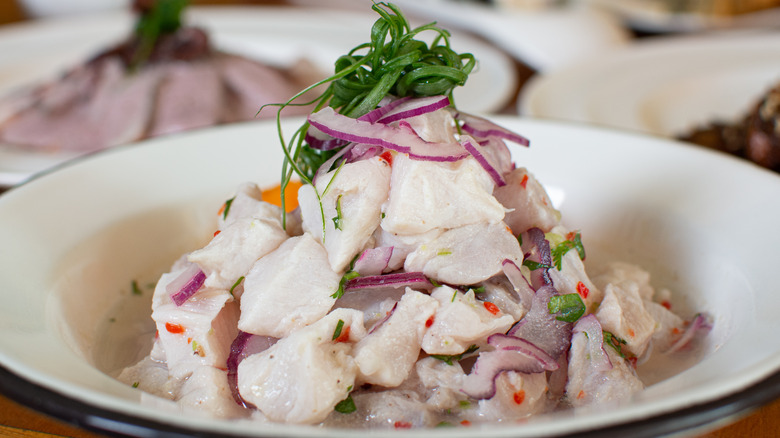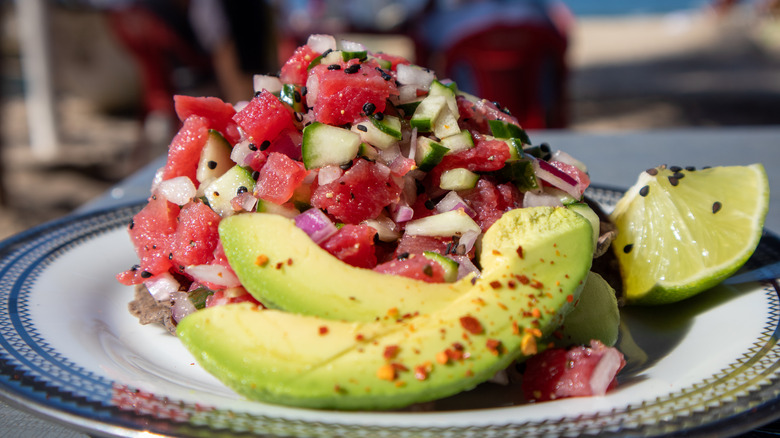Peruvian Vs. Mexican Ceviche: What's The Difference?
Delectable ceviche, now a mainstay in hip restaurants and seaside vacations, owes its origins to ancient fishing villages on the Peruvian coast. The dish first emerged millennia ago as a flavorful combination of fresh-caught fish, ground peppers, and seaweed. Thousands of years later, the Columbian exchange introduced limes, and the currently ubiquitous citrus-marinated rendition was born, reports National Geographic.
The key to delicious ceviche is not so much in the recipe as the freshness of the fish (via Serious Eats). So it's paramount that the seafood doesn't spend much time out of the water, both for flavor and since saltwater bacteria propagate at cooler temperatures. And once marination starts, it's best to keep curing time around 15 minutes — for white-flesh fish — or else the fish falls apart.
Once the fundamentals are down, the sky's the limit for renditions — from conch-based versions in Belize to sea-bass and tortilla Costa Rican renditions to ceviche preparation adapted to Latin American cultures across the entire Pacific coast, per Classic Journeys. Of course, the distribution includes Mexico, where the dish has some distinct characteristics.
Mexican ceviche utilizes different fish and fillers than Peruvian ceviche
As a preparation method that highlights the local catch, it's no surprise different regions utilize different fish for ceviche. In Peru, sea bass is the go-to, although, in Lima, sole is also prepared, reports Jaguar. In Mexico, shrimp and tuna are more common. Since such constituents are less delicate than white-fleshed fish, the marination time runs longer than in Peruvian variants. And expect some tortilla chips to accompany the delicious coastal dish (via EatPeru).
Besides the seafood base, the vegetable embellishments in ceviche also greatly differ per region. Mexican ceviche often throws in jalapeño, tomatoes, cilantro, and many fresh ingredients in general, according to My Latina Table. Meanwhile, traditional Peruvian ceviche keeps it simple — only onion, aji pepper, and sometimes choclo, a type of Andean white corn (via Here Magazine). The best part about ceviche is that the ingredients speak for themselves. Sure, there are classic versions of ceviche, but there's no wrong way to enjoy it; simply marinate and dig in.

